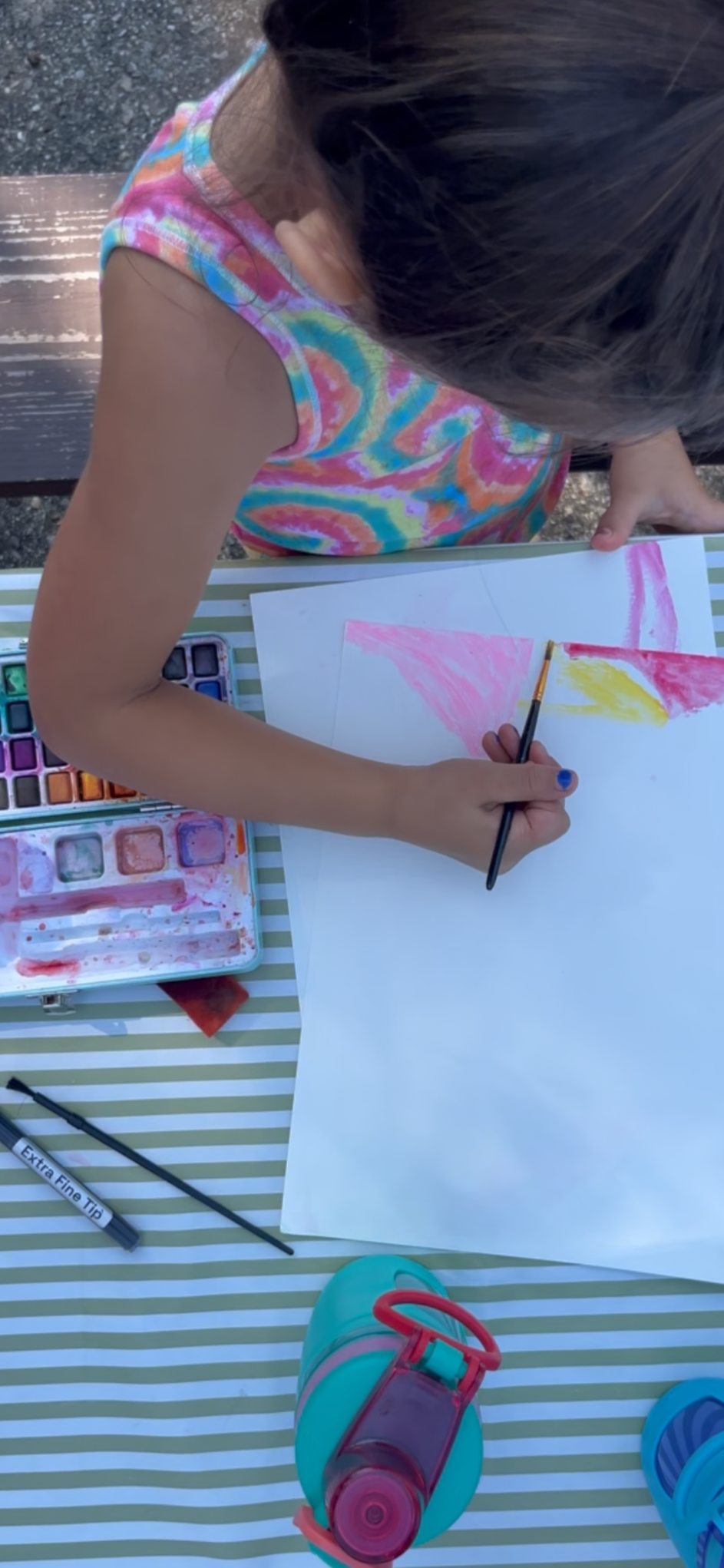Farm Animal Mud Bath Sensory Bin
Mud! We use water frequently in our sensory bins, like in this Citrus Water Sensory Bin and for our Nature Soup, so it was totally unexpected when I set up a bucket of dirt and let the kids go nuts! They had an absolute blast combining dirt and water to make mud and I would 10/10 recommend this activity if you don’t mind a little mess.
I’ll be honest, I was a little nervous to try this activity. I was worried it would take forever to clean up or that all the toys and clothes would be ruined, but it really was not bad at all. We did this in the driveway and used A LOT of dirt because the kids liked pouring and scooping, but you could scale it back and use only a little mud inside on a towel or shower curtain to contain the mess.
Here’s what you need
Sensory bin. We used two- one for mud and one with water for the animals to get clean.
Animal Figurines. We used this set and the animals were great! Quality and detail were good for the price.
Dirt. You could buy some or get some from your yard. We don’t have any dirt piles left and I didn’t want to disrupt our landscape, so I asked around in our neighborhood if anyone had dirt they didn’t mind parting with. A generous neighbor gave us several buckets to use, which was so kind.
Water. I typically fill up a giant bowl, bucket, or mason jar depending on what skills I want to encourage or the type of activity we are doing.
Toothbrush. We sometimes save old ones to use for activities and I’m glad I had one for this. It was in high demand and I wish I had one for each person.
Scoops and spoons.
Set up
2 minutes
Set up your water source.
Set up the dirt, animals, toothbrush, and scoops.
Clean up
5-10 minutes
Empty mud out of your bin and rinse with water.
Collect all muddy items in the sensory bin and rinse off before putting in dishwasher if able. I hand washed the animals and sensory bin. The dirt buckets stayed in the garage for future messy play.
Let animals dry before storing.
Clean the kids. I chose to have them help with collecting the messy items and finish cleaning myself. I filled up the bin with fresh water outside and let them try to clean their arms (and legs) before going inside. I put the dirty clothes directly into the washing machine, got everyone new clothes, and finished rinsing everything else in the sink.
The setup for this activity was a breeze, especially because I presented the materials all separately and let them decide how to use them. We talked about how to make mud using water and dirt, but then they got to experiment with different ratios on their own to make the mud soupy or thicker.
I gave Ellette a bucket of water to play with instead of mud because she still puts everything immediately into her mouth. The water stayed clean-ish for a few minutes until the big sisters rinsed off their muddy animals in the fresh water, but it was easy to dump out and refill.
Apparently, I wasn’t too forward thinking on all the white clothing, but I started a load of laundry immediately after and everything came out clean. Crisis averted!
It was amazing to watch the girls get so engrossed with this activity. It had been a hard day with a lot of bickering and button pushing. I almost didn’t set this sensory bin up because I wasn’t sure if I had the capacity for a flop or a giant mess, but it was 100% worth the few minutes of cleaning. This totally changed the tone for the rest of the day!
I started with the bucket of dirt next to the sensory bin and let the kids decide how and how much to put in. They started scooping just a little at a time, but quickly decided that dumping it straight from the source was much more efficient.
Next it was time for the water. I picked a mason jar for this activity so the kids could practice pouring and being safe with glass. I was worried that a bowl or bucket would get muddy too quickly and require me to step in to clean or refill. See my thoughts on doing less for setup/refreshing supplies in this post. Note: we have practiced using glass a lot before this activity. I like to start with a small glass, even a shot glass or small measuring glass works great, and give a lot of close supervision. After the kids show success, we progress with container size, amount of water/liquid in the glass, decrease supervision, or try outside vs inside.
I play the long game with life skills like this. Even though it drives Ryan batty with how long it takes the kids to do some things on their own, it really has been a great investment of my time and energy as they get older and can do so many things on their own.
After the got the water and dirt combined to mix the perfect mud consistency, the animals got to play in the mud bath! The kids were skeptical that it was actually ok to get everything so dirty, so the first few times the animals barely got their legs muddy! It didn’t take long for the kids to really figure out how fun mud is and the animals were then completely submerged.
We kept the extra bin for rinsing water, which needed to be refilled a few times because we had a lot of dirty animals! The toothbrush was used primarily for giving the animals a scrub in the clean water. If you have an old toothbrush somewhere, save it until you can whip out a bucket of dirt for this activity.
This activity was fairly hands off and extendable with a little fresh water. Sometimes with paint or other paper activities, the kids need more direction or for me to cut/color/clean something before they can keep playing. This mud bath sensory bin was fairly open ended, so the kids could guide the play themselves. And it allowed me a few moments of breathing room.
It took 30+ minutes, but the kids figured out they could put more than just animal feet in the mud. Soon enough they were elbow deep and splashing mud everywhere! There are some studies that show contact with dirt can be mood boosting and offer longer term mental health benefits with regular exposure. I find working in the garden so grounding for myself and can see benefits for the kids, too. Maybe playing in mud can do some of the same things.
Like I mentioned earlier, this activity really provided a reset button for us all. The kids stopped bothering each other and were able to cooperate for, what felt like, the first time that day. I got a break from the “mom” calls for a few minutes and even got a few moments of not getting touched or climbed on!
As you can tell, we ended up with mud everywhere! It was freeing, after my initial internal cringing, to get dirty and play without so many restrictions or trying to keep things tidy. It pushed me out of my comfort zone to watch such messy play and not jump in to “fix” it, but I will absolutely be pulling this idea out again on a day we need a fresh start.
What do you think? Do you typically feel comfortable with such messy play? Have you ever made mud with your kids? Comment below and tell me what animals or people you put in your mud bath and how long the cleanup took you.






















I’m bringing you a whole post full of ideas that I am actually gifting this year! You are sure to find some inspiration in this post.